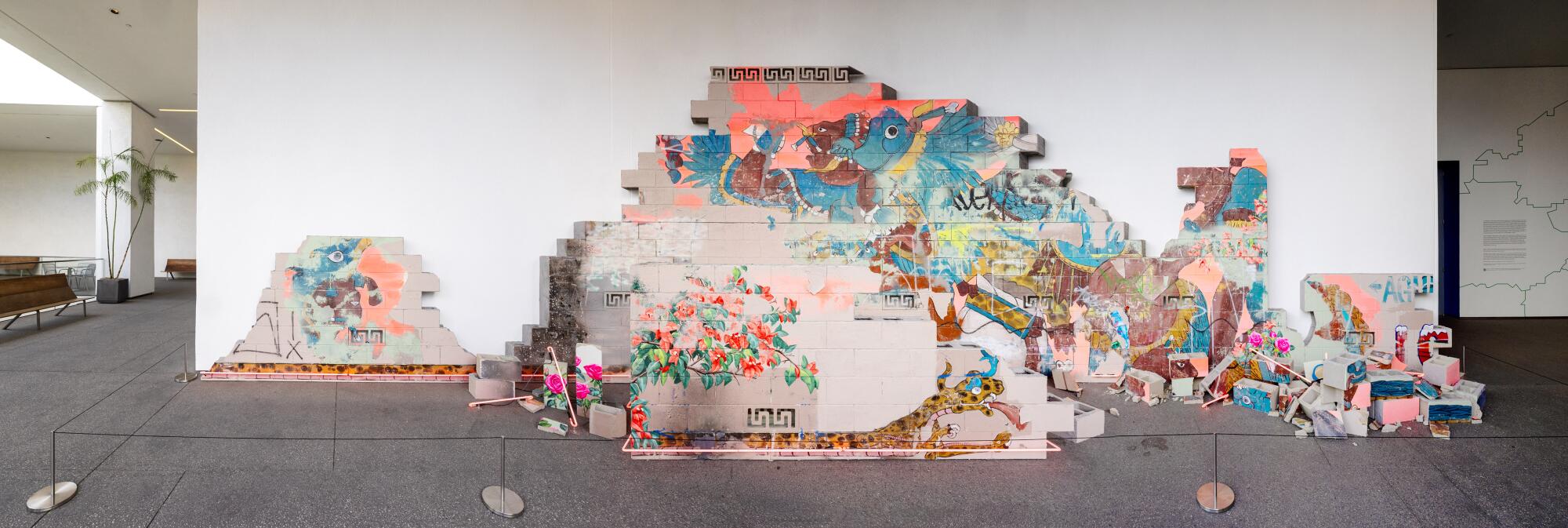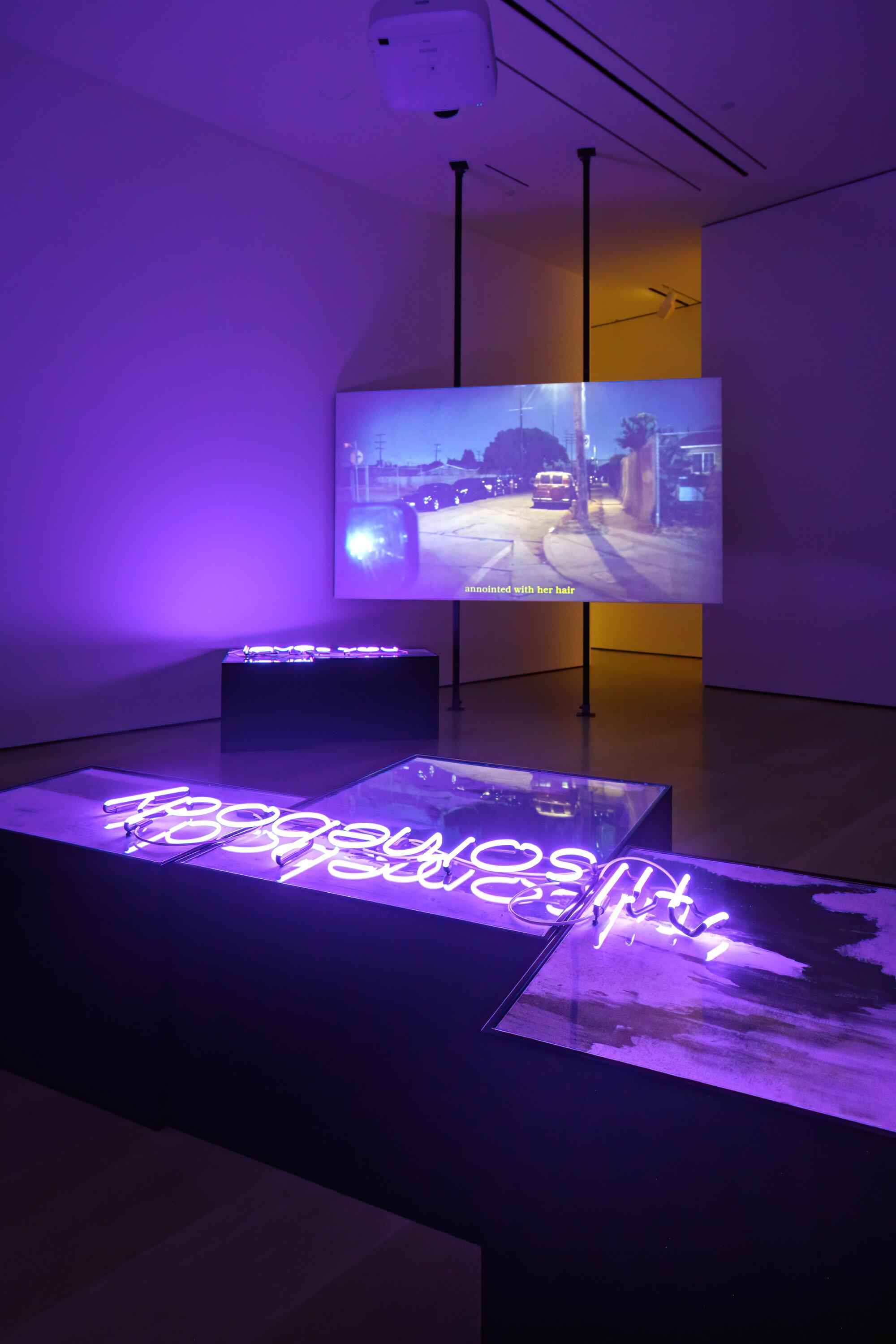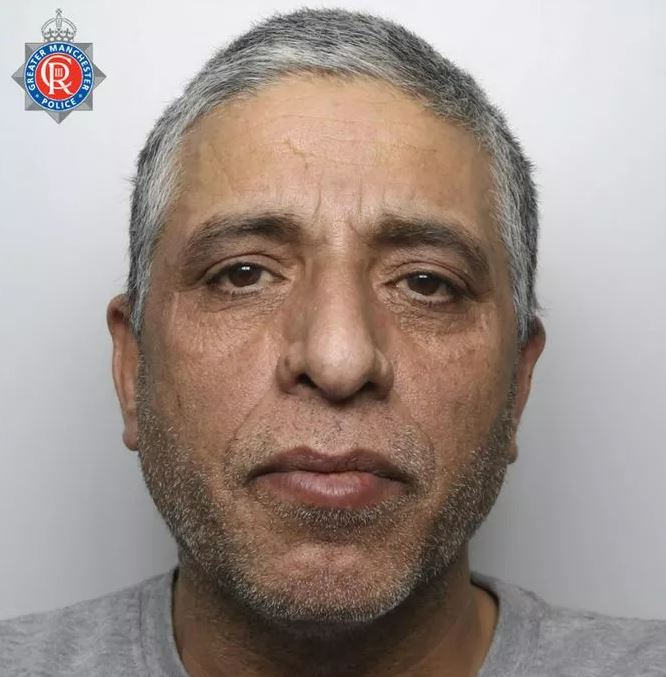Latino artists featured in Hammer Museum’s Made in L.A. biennial
Somehow in Los Angeles, everything comes back to traffic.
While making their works featured in the Hammer Museum’s Made in L.A. biennial, artists Patrick Martinez, Freddy Villalobos and Gabriela Ruiz set out to capture the essence of the city’s crammed streets through different lenses.
For over a decade, the Hammer has curated its Made in L.A. series to feature artists who grapple with the realities of living and making art here. It’s an art show that simultaneously pays homage to legacy L.A. artists like Alonzo Davis and Judy Baca, and gives a platform to newer faces such as Lauren Halsey and Jackie Amezquita.
This year’s show, which opened last month, features 28 artists. As part of that cohort, Martinez, Villalobos and Ruiz bring their lived experiences as Latinos from L.A. to the West Side art institution, drawing inspiration from the landscapes of their upbringing.
While creating their displayed works, Martinez took note of the many neon signs hanging in stores’ windows, leading him to make “Hold the Ice,” an anti-ICE sign, and incorporate bright pink lights into his outdoor cinder block mural, “Battle of the City on Fire.” With flashing lights and a shuttered gate tacked onto a painted wooden panel, Ruiz drew on her experiences exploring the city at night and the over-surveillance of select neighborhoods in the interactive piece, “Collective Scream.” Villalobos filmed Figueroa Street from a driver’s perspective, observing the street’s nighttime activity and tracing the energy that surrounds the place where soul singer Sam Cooke was shot.
This year, Made in L.A. doesn’t belong to a specific theme or a title — but as always, the selected art remains interconnected. These three artists sat down with De Los to discuss how their L.A. upbringing has influenced their artistic practice and how their exhibited works are in conversation. Made in L.A. will be on view until March 1, 2026.
The following conversation has been condensed and edited for clarity.
All three of you seem to put a spotlight on various elements of L.A.’s public spaces. How is your art affected by your surroundings?
Ruiz: I really got to explore L.A. as a whole, through partying and going out at night. I prefer seeing this city at night, because there isn’t so much traffic. That’s how I started my art practice. I would perform in queer nightlife spaces and throw parties in cheap warehouses. With my commute from the Valley, I would notice so much. I wouldn’t speed through the freeway. I’d instead take different routes, so I’d learn to navigate the whole city without a GPS and see things differently.
Martinez: That’s also how I started seeing neons. I had a studio in 2006 in downtown, off 6th and Alameda. I would wait for traffic to fade because I was staying in Montebello at the time. I would drive down Whittier Boulevard at night. And you see all the neon signs that have a super saturated color and glow bright. I thought about its messaging. None of the businesses were open that late. They were just letting people know they were there.
Ruiz: Specifically in this piece [“Collective Scream”], there’s a blinking street lamp. It reminds me of when I would leave raves and would randomly see this flickering light. It’s this hypnotizing thing that I would observe and take note of whenever I was on the same route. There’s also a moving gate, [in my piece,] that resembles the ones you see when you’re driving late at night and everything’s gated up.
Villalobos: You do experience a lot of L.A. from your car. It’s a cliche. But f— it. It’s true. When I moved out of L.A., I felt a little odd. I missed the bubble of my car. You can have what seems to be a private moment in your car in a city that’s packed with traffic and so many people. It made me think about what that means, what kind of routes people are taking and how we cultivate community.

Patrick Martinez’s “Battle of the City on Fire,” made in 2025, was inspired by the work of the muralist collective, named the East Los Streetscapers.
(Sarah M Golonka / smg photography)
It’s interesting that you all found inspiration in the biggest complaints about L.A. Maybe there’s something to think about when it comes to the way those born here think of car culture and traffic.
Martinez: I see its effects even with the landscapes I make. I’ll work from left to right, and that’s how we all look at the world when we drive. I always think about Michael Mann movies when I’m making landscapes, especially at night. He has all those moments of quiet time of being in the car and just focusing on what’s going on.
Beyond surveying the streets, your works touch on elements of the past. There’s a common notion that L.A. tends to disregard its past, like when legacy restaurants shut down or when architectural feats get demolished. Does this idea play any role in your work?
Martinez: The idea of L.A. being ashamed of its past pushed me to work with cinder blocks [in “Battle of the City on Fire”]. One of the main reasons was to bring attention to the East Los Streetscapers, the muralists who painted in East L.A. [in the 1960s and ‘70s as a part of the Chicano Mural Movement]. There was this one mural in Boyle Heights that was painted at a Shell gas station. It was later knocked down and in the demolition pictures, the way the cinder blocks were on the floor looked like a sculptural painting. It prompted me to use cinder blocks as a form of sculpture and think about what kind of modern-day ruins we pass by.
Villalobos: Speaking about L.A. as a whole feels almost too grand for me. But if I think about my specific neighborhood, in South Central, what comes to my mind is Black Radical Tradition. It’s where people are able to make something out of what other people might perceive as nothing. There’s always something that’s being created and mixed and mashed together to make something that, to me, is beautiful. It’s maybe not as beautiful to other people, but it’s still a new and creative way to see things and understand what comes before us.
Ruiz: Seeing my parents, who migrated to this country, come from nothing and start from scratch ties into that idea too. Seeing what they’ve been able to attain, and understanding how immigrants can start up businesses and restaurants here, speaks so much to what L.A. is really about. It’s about providing an opportunity that everybody has.
So it’s less about disregarding the past and more about making something out of nothing?
Martinez: It ties back to necessity, for me. Across this city, people come together by doing what they need to do to pay rent. It’s a crazy amount of money to be here. People need to regularly adjust what they do to survive. Recently, I’ve been seeing that more rapidly. There are more food vendors and scrolling LED signs, advertising different things. Once you understand how expensive this backdrop can be, that stuff sits with me.

Freddy Villalobos’ “waiting for the stone to speak, for I know nothing of aventure,” is an immersive work in which viewers can feel loud vibrations pass as they, figuratively, travel down Figueroa Street.
(Sarah M Golonka / smg photography)
We’ve talked a lot about how the past affects L.A. and the role it plays in your art. Does a future L.A. ever cross your mind?
Villalobos: I feel very self-conscious about what I’m gonna say. But as much as I love L.A. and as much as it helped me become who I am, I wouldn’t be too mad with it falling apart. A lot of people from my neighborhood have already been moving to Lancaster, Palmdale and the Inland Empire. When I go to the IE, it feels a little like L.A. and I’m not necessarily mad at that.
Ruiz: It’s really difficult to see what the future holds for anybody. Even with art, what’s going to happen? I don’t know. It’s really challenging to see a future when there’s a constant cycle of bad news about censorship and lack of funding.
Martinez: It’s murky. It’s clouded. This whole year has been so heavy, and everyone talking about it adds to it, right? We’re facing economic despair, and it’s all kind of heavy. Who knows what the future will hold? But there are definitely moves being made by the ruling class to make it into something.


